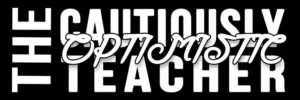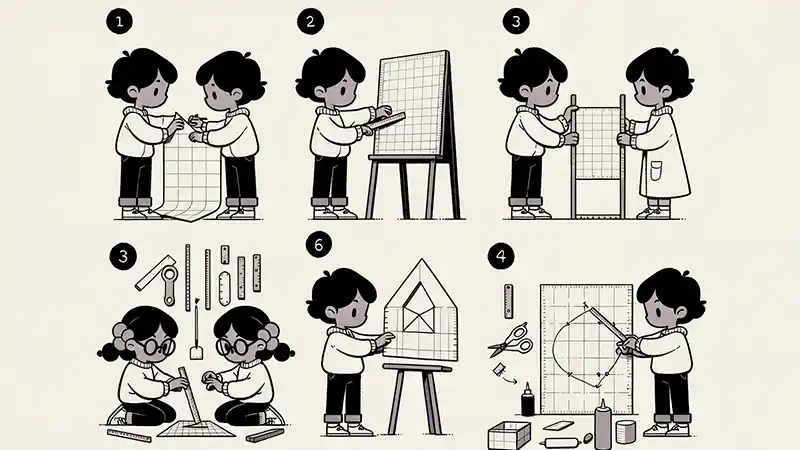As an educator, I’ve always sought ways to innovate and improve the learning experiences for my students. Over the years, two pedagogical approaches have stood out prominently: Project-Based Learning (PBL) and Differentiated Teaching. Both of these methods, though distinct in their own right, offer revolutionary ways to elevate the classroom experience. However, the true magic emerges when one begins to explore the amalgamation of these approaches. The fusion of PBL with Differentiated Teaching has garnered significant interest in the educational community, and for good reason. This essay aims to delve into the core of these methodologies, shedding light on their principles and the immense potential they unlock when combined.
Understanding the Concepts
Project-Based Learning (PBL): At its core, Project-Based Learning is an instructional method where students actively explore real-world challenges and problems to acquire a deeper understanding of the subject matter. It’s not just about assigning projects; it’s about immersing students in the learning process, making them the protagonists of their own educational journey. PBL promotes critical thinking, collaboration, and self-directed learning. It shifts the classroom dynamic from passive instruction to active exploration, where students are empowered to question, investigate, and present their findings. Each project serves as a vessel for learning, where theoretical knowledge meets practical application.
Differentiated Teaching: Differentiated Teaching, on the other hand, is a responsive approach. Recognizing that no two students are the same, this method tailors instruction to individual needs. Whether it’s through content, process, or product, differentiation ensures that every student’s learning style and readiness level are addressed. It’s a student-centered approach, taking into account their varied backgrounds, abilities, and interests. The goal is simple yet profound: to ensure that all students, irrespective of their starting point, are provided with opportunities to grow, succeed, and reach their fullest potential.
Key Benefits of Merging PBL with Differentiated Teaching

Navigating the educational world, it’s not uncommon for educators to encounter methodologies that, when isolated, offer unique advantages. However, the fusion of Project-Based Learning and Differentiated Teaching presents a synergy that amplifies the benefits of both approaches. Here’s a closer look at the transformative outcomes of this harmonious integration:
Enhanced Student Engagement and Motivation: When students are presented with real-world challenges through PBL, their innate curiosity is ignited. This becomes even more potent when paired with Differentiated Teaching, which ensures that the projects are tailored to each student’s interests and capabilities. The result? A classroom brimming with enthusiasm, where students are not just passive recipients of knowledge but active participants in their own learning journey.
Personalized Learning Experiences Catering to Individual Strengths and Needs: Differentiated Teaching’s cornerstone is personalization. By merging it with PBL, educators can design projects that not only resonate with the broader class but also cater to individual strengths and areas of growth. Whether it’s a kinesthetic learner building a model or a visual learner creating a detailed infographic, the combined approach ensures that every student’s learning pathway is both challenging and rewarding.
Promotion of Critical Thinking and Problem-Solving Skills: PBL inherently pushes students to think critically, analyze complex problems, and come up with innovative solutions. When this is coupled with Differentiated Teaching, which encourages students to approach problems from their unique perspectives, it fosters a depth of understanding and hones their problem-solving abilities. Students are not just memorizing facts; they’re analyzing, synthesizing, and evaluating information, preparing them for the challenges of the real world.
Encouragement of Collaborative Learning and Teamwork: One of the standout features of PBL is its emphasis on collaboration. Students often work in teams, bringing diverse skills and viewpoints to the table. Through Differentiated Teaching, educators can strategically form groups that maximize the strengths of each member, ensuring that every voice is heard and valued. This not only enhances the learning experience but also instills vital life skills such as communication, empathy, and teamwork.
Increased Flexibility in Teaching Methods and Assessment: The dynamic nature of merging PBL with Differentiated Teaching offers educators a plethora of tools and strategies. They’re no longer confined to traditional teaching methods or assessments. Instead, they can employ a range of techniques, from hands-on experiments to reflective journals, ensuring that assessment is multi-faceted and genuinely reflective of a student’s understanding and skills.
In essence, the confluence of Project-Based Learning and Differentiated Teaching offers a pedagogical powerhouse. It’s an approach that doesn’t just aim for academic excellence but strives for holistic development, molding students into critical thinkers, lifelong learners, and collaborative team players. As educators, embracing this integrated methodology might very well be the key to unlocking unprecedented levels of student achievement and satisfaction.
Challenges and Solutions
Merging two powerful pedagogical approaches like Project-Based Learning and Differentiated Teaching holds immense promise, but like any innovative endeavor, it is not without its challenges. Understanding these potential hurdles and devising effective strategies to address them is paramount for educators seeking to harness the combined strength of these methods. Let’s delve into some of these challenges and explore the solutions that can guide us to success:
Potential Hurdles in Merging the Two Methods
Resource Intensity: Integrating PBL with Differentiated Teaching can be resource-intensive, both in terms of materials and time. Creating personalized projects for diverse learners often requires a variety of materials and extended planning time.
Assessment Complexity: With personalized learning experiences comes the challenge of devising assessment methods that are both fair and comprehensive. Traditional grading systems might not fully capture the depth of understanding and skills developed through such an approach.
Classroom Management: Managing a classroom where students are working on varied projects, each tailored to their strengths and needs, can be daunting. Ensuring that each group or individual remains on task and meets learning objectives can be a complex endeavor.
Professional Development: Not all educators may be familiar with or trained in both PBL and Differentiated Teaching. Ensuring consistent and effective implementation requires ongoing professional development and support.
Strategies for Effective Implementation and Overcoming Challenges
Collaborative Planning: To address the resource intensity, educators can collaborate with their peers, pooling resources and sharing best practices. Engaging in team planning sessions can also distribute the workload and introduce diverse perspectives.
Portfolio-Based Assessment: Instead of traditional grading systems, educators can adopt portfolio-based assessments. This allows students to showcase their learning journey, demonstrating both their process and final products, making assessments more holistic and reflective of their growth.
Defined Roles and Checkpoints: To streamline classroom management, educators can assign specific roles to students within their project groups and set regular checkpoints. This ensures that students have clear responsibilities and are making consistent progress toward their goals.
Ongoing Professional Development: Schools and educational institutions should prioritize regular training sessions, workshops, and seminars on PBL and Differentiated Teaching. This continuous professional development ensures that educators are equipped with the latest strategies and tools to integrate these methods effectively.
Steps for Implementation

Successfully merging Project-Based Learning with Differentiated Teaching is more than just understanding their benefits and challenges; it requires a systematic approach to implementation. Here are the pivotal steps that educators and institutions can adopt to ensure a seamless and effective integration of these pedagogical giants:
Assessing the Current Teaching Framework
Self-evaluation: Begin by introspecting on your current teaching methodologies. What elements of PBL and Differentiated Teaching are already present? What’s missing? This helps in identifying gaps and areas for enhancement.
Student Feedback: Gather feedback from students about their learning experiences. Their insights can offer invaluable perspectives on what works and where improvements are needed.
Reviewing Resources: Take stock of available resources — from materials to technology and external partnerships. This will help in planning projects that are feasible and impactful.
Training and Professional Development for Educators
Workshops and Seminars: Regularly organize workshops that focus on the principles and practices of PBL and Differentiated Teaching. Interactive sessions with experts can provide hands-on experience and fresh insights.
Peer Mentorship: Pairing seasoned educators with those new to these methods can foster an environment of mutual learning and support.
Resource Sharing: Create a centralized platform where educators can share resources, lesson plans, and successful project ideas, ensuring that the entire educational community benefits from individual successes.
Designing PBL Projects with Differentiation in Mind
Student Profiles: Start by understanding your students. Create profiles that capture their learning styles, strengths, interests, and areas for growth. This foundation is crucial for tailoring projects effectively.
Flexible Project Frameworks: Design projects that have a flexible framework, allowing for adaptations based on individual or group needs.
Multiple Entry and Exit Points: Ensure that projects have varied entry and exit points, catering to students with different proficiency levels. This ensures that all students are challenged appropriately and can experience success.
Continuous Assessment and Feedback Mechanisms
Formative Assessments: Implement regular check-ins and mini-assessments throughout the project’s duration. This helps in gauging student understanding and provides opportunities for timely interventions.
Student Reflections: Encourage students to reflect on their learning journey, both in terms of content understanding and the skills they’ve developed. This introspection can be a powerful tool for growth.
Feedback Loops: Create mechanisms where students can offer feedback on the project’s structure and execution. This iterative feedback ensures that the teaching methods remain dynamic and responsive to student needs.
Conclusion
The realm of education is ever-evolving, and as educators, we are bestowed with the profound responsibility of shaping the minds of the future. The amalgamation of Project-Based Learning with Differentiated Teaching is not just another pedagogical trend; it represents a shift in how we perceive and facilitate learning. The transformative potential of merging these methodologies is evident in classrooms where students, brimming with curiosity and passion, delve deep into projects tailored to their unique strengths and needs. This combined approach nurtures not only academic prowess but also critical life skills such as collaboration, problem-solving, and self-directed learning.
For educators on the brink of this journey, I extend a heartfelt encouragement: take the leap. Embrace the integrated approach of PBL and Differentiated Teaching. Experiment with it, adapt it, and watch as it reshapes your classroom into a vibrant hub of exploration and discovery. The road may have its challenges, but the rewards, in terms of student growth and satisfaction, are unparalleled.
Further Reading
“Drive: The Surprising Truth About What Motivates Us” by Daniel H. Pink: A deep dive into motivation and how project-based learning can tap into intrinsic motivators.
“6 Strategies for Differentiated Instruction in Project-Based Learning” published in Edutopia: This article explores the synergies between PBL and differentiated instruction and offers practical insights.
“Teach Like a Runner: 3 Ways to Get Started With Project-Based Learning” published in Education Week: A comprehensive look at the foundational principles of effective Project-Based Learning.

